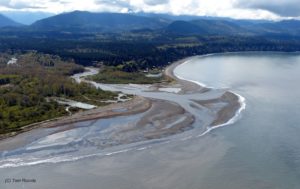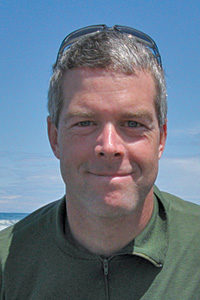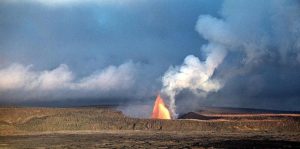
About the Talk
Chasing Lava – A Geologist’s Adventures at Kilauea Volcano, Hawai’i
In 1969, as Neil Armstrong set foot on the moon, a young geologist known as Duff (aka Wendell Duffield) was preparing to set foot on a rocky landscape of another sort: Kilauea Volcano, a growing shield volcano, on the island of Hawaii, where he would spend three years at the U.S. Geological Survey’s Hawaiian Volcano Observatory. Duff’s time at HVO encompassed everything from the scientific to the humorous to life-threatening.
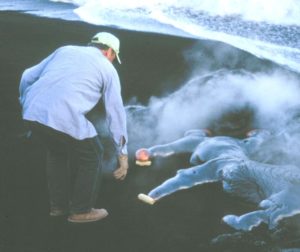 While he was at HVO, Kilauea erupted at three areas. Several times, 2,000-ft-tall lava fountains spewed from the east rift zone, at a site later named Mauna Ulu (Hawaiian: growing mountain). Elsewhere, so-called “curtains of fire” danced from long cracks on the floor of Kilauea’s summit caldera. And for only the fourth time in Hawaii’s historic record, lava emerged from a fissure along the southwest rift zone.
While he was at HVO, Kilauea erupted at three areas. Several times, 2,000-ft-tall lava fountains spewed from the east rift zone, at a site later named Mauna Ulu (Hawaiian: growing mountain). Elsewhere, so-called “curtains of fire” danced from long cracks on the floor of Kilauea’s summit caldera. And for only the fourth time in Hawaii’s historic record, lava emerged from a fissure along the southwest rift zone.
An unexpected “extra” for Duff was large, sluggishly circulating lake of thinly-crusted-over molten lava that played out a miniature version of global plate tectonics — then a revolutionary and newly developing model of how Earth’s crust moves about. Duff’s movies and photos of the small-scale version of ‘plate’ motions quickly became a popular teaching aid in classrooms worldwide.
Meanwhile, during the brief moments between Duff’s observing and recording antics of the active volcano, his dog Cinda discovered a reticulated python hiding in the rainforest — in a state that proudly advertised a total lack of snakes other than at the Oahu zoo. This discovery was very unwelcome news for Hawaiian political officials.
 About the Speaker
About the Speaker
Duffield’s first encounter with an active volcano was at Kilauea on the Big Island in 1968. From 1969 to 1972 he was a staff geologist there at the USGS Hawaiian Volcano Observatory. Kilauea erupted nearly non-stop during those three years. His book “Chasing Lava” tells the tale of those exciting times.
In 1997, Duff retired from the USGS and immediately settled into being an Adjunct Professor for the Geology Department of Northern Arizona University, Flagstaff, where he gave the occasional classroom lecture, mentored students, continued researching topics volcanic and began writing essays and books on a variety of topics. Although he moved from Flagstaff to Whidbey Island in May of this year, he retains his NAU title but now spends most of his time writing.

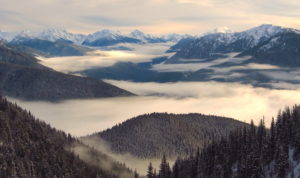
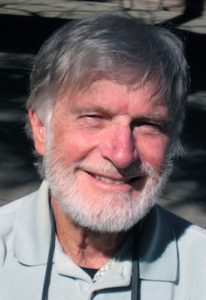
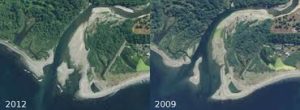
 For nearly a century, two dams on the Elwha River disrupted the flow of sediment from the Olympic Mountains to the Strait of San Juan de Fuca, contributing to the erosion of the Elwha River delta just west of Port Angeles and altering coastal habitat both to the east and west.
For nearly a century, two dams on the Elwha River disrupted the flow of sediment from the Olympic Mountains to the Strait of San Juan de Fuca, contributing to the erosion of the Elwha River delta just west of Port Angeles and altering coastal habitat both to the east and west.